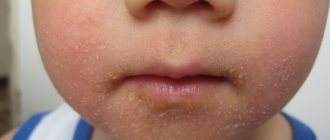Hematologist
Higher education:
Hematologist
Samara State Medical University (SamSMU, KMI)
Level of education - Specialist 1993-1999
Additional education:
"Hematology"
Russian Medical Academy of Postgraduate Education
Blood is a liquid tissue consisting of approximately 55% plasma fluid and 45% cells. There are three main types of cells in the blood:
- Red blood cells;
- White blood cells;
- Platelets.
92% of blood plasma consists of water, and the remaining 8% consists of proteins, metabolites and ions. The density of blood plasma is about 1025 kg/m3, and the density of blood cells circulating in the blood is about 1125 kg/m3. Blood plasma and its contents are called whole blood. The average density of whole blood for humans is about 1060 kg/m3.
There is a saying that “blood is water,” but thick blood can become a serious medical problem. Although rare, there are some disorders that cause thick blood, including those that lead to abnormally high numbers of blood cells and conditions that lead to hypercoagulability, or hyperclotting. These disorders can lead to serious consequences, so early detection and treatment are important.
How can a child's blood thicken?
When your baby gets a satchel or a cut, the baby's body forms a blood clot to stop the bleeding. This process is called coagulation. A blood clot is formed from proteins in the blood called fibrin and platelets, or cell fragments. Typically, your body will break down the clot. However, sometimes blood clots form too easily or do not dissolve properly. This excessive clotting—hypercoagulability—is also what causes thick blood. Thick blood in a child can be dangerous because blood clots can form inside blood vessels and block blood flow to tissues or organs. Hypercoagulability may be due to genetic disorders or it may be associated with acquired diseases, such as some autoimmune diseases and cancer, and the use of certain medications.
Does the age of the child matter?
If your baby has just been born, don't worry if his blood tests show thick blood. This is normal for babies. For newborns, thick blood is not a threat.
But if your baby is more than one year old, this test result may indicate health problems. The following are possible causes of thick blood. But don’t rush to panic ahead of time. Only after receiving all the necessary detailed tests will a specialist make an accurate diagnosis.
The cause of blood clots may be:
- Cholesterol.
- Syndrome of increased blood plasma viscosity.
- High hematocrit number or hematocrit.
Whatever the exact diagnosis, you can be sure that the quality of the blood leaves much to be desired. After all, the high viscosity of blood leads to difficulty in the transportation process, which is the main function of blood.
Moreover, increased density has a bad effect on oxidative and reduction processes. And this negatively affects the present work and the further functioning of other vital organs.
How to maintain the health of a child if he is diagnosed with thick blood?
Make sure your child's blood tests are normal and not off the charts. This may require testing much more often than usual.
The child's health should be maintained from birth. As soon as you discover any deviations from the norm, immediately contact your general practitioner. And the therapist, in turn, can refer you for examination to a hematologist. The sooner you take action, the faster your concerns will be neutralized
Symptoms and danger of the problem
Hypercoagulation may not manifest itself in any way, and the problem can only be detected after a blood test.
But in most cases, the child experiences the following symptoms:
- weakness and drowsiness;
- headache and dizziness;
- swelling and feeling of heaviness in the arms and legs;
- painful sensations in the fingertips and decreased temperature of the extremities;
- shortness of breath and increased blood pressure;
- cyanosis, that is, blue discoloration of the skin and mucous membranes;
- feeling of extreme thirst and dry mouth;
- attention disorder.
During analysis, this phenomenon is determined by an increase in the concentration of red blood cells and other blood cells.
Increased blood viscosity is considered a rather dangerous problem. Blood circulation is impaired. The movement of blood through the vessels slows down, it is poorly saturated with oxygen and nutrients and cannot quickly transport them to the internal organs, that is, the basic function of the blood is disrupted. This leads to the fact that the work of all organs and systems is disrupted.
In addition, the risk of blood clots increases. Because of this, the child may have a stroke, intestinal necrosis and other serious problems that threaten the life of any person, and especially the child.
The above symptoms can disrupt the functioning of all the baby’s organs and even lead to death.
For what reasons can a child’s blood thicken?
In children, immediately after birth, as a rule, there is a fairly high level of blood viscosity. This may be caused by an increased amount of red blood cells.
Don't be alarmed, this is a natural process. After all, even in the mother’s belly, the baby needs more red blood cells. They are necessary for this, so that the tissues receive oxygen in sufficient quantities. As soon as the baby is born, red blood cells begin to disintegrate and are replaced by new ones. It is for this reason that so-called “newborn jaundice” may appear.
Some diseases, namely blood cancer, thicken the blood because they lead to abnormally high levels of blood cells.
One of the most common causes of thick blood is polycythemia (PV), in which the body produces an excess amount of blood cells, mainly too many red blood cells. Polycythamia is caused by a genetic mutation and usually develops slowly over several years.
Waldenström's macroglobulinemia (a type of non-Hodgkin's lymphoma or blood cancer) leads to overproduction of antibodies, a type of blood protein called immunoglobulins.
Myeloma is a blood cancer caused by the abnormal and uncontrolled growth of plasma white blood cells that produce antibodies. These conditions can also cause thick blood, a crowding of blood with abnormal antibodies, leaving too few antibodies to fight infection.
Thick blood
The term “thick blood” means an increase in the level of erythrocytes (red blood cells), as well as increased hemoglobin (an iron-containing protein that supplies tissues with oxygen). Their indicators, like the hematocrit number, vary depending on the age group, so the blood of a newborn, a young man and an elderly person varies significantly in indicators.
Thickness is not a fatal disease at all, however, if you neglect this syndrome, you can get serious problems. The degree of viscosity is directly related to the flow rate, in other words, blood that moves too slowly through the vessels is called viscous.
To push thickened blood through the vessels, the body requires more effort, which increases blood pressure (BP), which puts additional stress on the heart and blood vessels. With density, there is always a risk of blood clots, leading to a high probability of stroke (deterioration in the supply of oxygen and nutrients to the brain, which leads to a lot of dysfunction in the body) or heart attack (death of heart tissue due to lack of blood supply).
A special device, a viscometer, helps determine the degree of viscosity. It compares the speed of flow of blood and water. If its movement is 4-5 times slower than the movement of water, its viscosity is considered normal.
How to treat thick blood in children?
Of course, any initiative regarding the treatment of thick blood, and especially in relation to children, is not welcome. Wait for the final verdict of the doctors, and then follow their further instructions.
Proper nutrition plays an important role in treatment. This rule is important for both sick and healthy children to follow.
A child's blood always remains in a liquid form due to the constant interaction of the system that ensures its clotting, as well as the system that resists clotting. The ratio of plasma (the liquid part of the blood) to cells is normally constant and with minor fluctuations quickly returns to its normal values. However, there are situations when the blood thickens.
Let's look at why a child may have thick blood, whether this poses a danger to him, and what parents should do if their daughter or son has thickened blood.
The most common cause of thicker blood in childhood is dehydration. It can be caused by insufficient drinking, vomiting, kidney failure, diarrhea, burns (if they are extensive), high fever, excessive sweating during physical activity, too dry air in the room and other factors.
If your child's blood thickens too much, this may include:
- Dizziness.
- Skin cyanosis.
- Swelling of the limbs.
- Feeling of heaviness in the arms and legs.
- Weakness.
- Pain in the tips of the fingers.
- Drowsiness.
- Dry mouth.
- Increased fatigue.
- Deterioration of concentration.
- Headaches.
- Thirsty.
- Increased blood pressure.
- Cold extremities.
- Shortness of breath.
In a blood test, increased blood density will be visible in the number of red blood cells (it increases) and changes in hematocrit (this indicator will also increase). The number of other blood cells may also increase.
If the blood in the child’s body becomes thicker than normal, it will have difficulty moving through the vessels. Since if the blood is too thick, it will not be sufficiently saturated with oxygen, the transport of nutrients and oxygen to the tissues is disrupted. This threatens the deterioration of the functioning of internal organs, as well as the gluing of blood cells to each other with the formation of blood clots. As a result, the child has an increased risk of strokes, heart attacks, intestinal necrosis and other pathologies.
At the same time, the doctor will advise parents to reconsider the baby’s diet. Your child’s diet should include foods that can thin the blood, such as garlic, citrus fruits, beets, sunflower seeds, ginger, sour berries, olive oil, cocoa and others. If you have thick blood, you should not eat bananas, smoked foods, fatty foods, carbonated drinks, buckwheat, lentils, walnuts, and rose hips.
In addition, parents should pay special attention to the child’s drinking regime. Children are given more pure water, herbal or green tea, vegetable or fruit juices. As for the use of any infusions, decoctions and other traditional medicine recipes, before giving any remedy to your child, you should definitely discuss this with your pediatrician.
Increased blood viscosity in newborn babies is normal. At the beginning of the development of the human body, this condition does not pose any threat.
If doctors find thick blood in a child older than one year, this may be a warning about health problems.
Blood consists of a liquid base (plasma) and formed components (blood cells). The amount of plasma must exceed the level of blood cells, otherwise it will become too thick. In medicine, there are the concepts of hyperviscosity syndrome and high hematocrit number (hematocrit). In the first case, indicators of the level of fibrinogen (a protein found in plasma that is involved in coagulation) and prothrombin (a complex plasma protein, the most important element of the coagulation process) are taken into account.
As for the hematocrit number, it is a reflection of the ratio of formed substances and plasma, on the basis of which either increased viscosity or fluidity is stated.
Thick blood can be for various reasons, but in any case it indicates a deterioration in its quality. First of all, due to increased viscosity, its main function - transporting nutrients and oxygen through the veins - is hampered.
Excessive viscosity has a negative effect on oxidative and reduction processes in tissues and organs, resulting in damage to the heart, brain, kidneys and liver. For this reason, it is very important to ensure that the quality of the blood is within normal limits and therefore those who periodically submit it for analysis act prudently. Correction is made through diet, increasing fluid intake and prescribing medication.
Why does the blood thicken?
Newborns always have increased blood viscosity caused by an increased content of red blood cells. This is due to the fact that during intrauterine development the child needs more red blood cells so that the tissues receive a sufficient amount of oxygen. Red blood cells begin to break down and are replaced with new ones immediately after a person is born. It is because of this increased breakdown that a phenomenon called neonatal jaundice occurs.
Increased blood viscosity is observed in all newborns
The main reasons for thick blood consistency may be:
- The child drinks little. Plasma is 90 percent water, so a decrease in the amount of fluid entering the body leads to a change in its consistency.
- Rapid loss of moisture due to dry air in the apartment (in winter) or excessive heat (in summer).
- The child is actively involved in sports, losing moisture through sweat.
- Presence of diabetes mellitus.
- Lack of activity of certain enzymes (enzymopathy), or their complete absence. This leads to the fact that the complete breakdown of microelements entering the blood with food does not occur. That is, under-oxidized decomposition products enter the blood, as a result of which its oxidation is observed.
- The child consumes many foods that thicken the blood. These can be eggs, legumes, cereals, rice, as well as simple carbohydrates in the form of sugar and fructose.
- Ecology. An unhealthy environmental situation affects food products, which, in turn, suppress enzymatic activity.
- Lack of minerals and vitamins, especially C and B.
- Malfunction of the kidneys, as a result of which they cannot cope with the removal of acids, and they do not leave the body. Blood oxidation occurs.
Kidney problems may be one of the reasons for thick blood in a child
The above reasons are not the only ones for blood thickening.
Symptoms
Thick blood is not an independent pathology, so it is not entirely correct to describe the signs accompanying it as symptoms, since they can occur against the background of other health abnormalities. However, a number of clinical symptoms characteristic of hypercoagulation can be noted:
- increased blood pressure;
- weakness and constant desire to sleep;
- thirst;
- absent-mindedness and increased fatigue;
- heaviness in the legs;
- depression;
- headache;
- cold extremities;
- venous network.
The list can be expanded, but it should be remembered that sometimes there are no symptoms at all, and hypercoagulation is diagnosed only after a blood test.
There is a way to independently determine the level of blood viscosity, but not every adult, and especially a child, will agree to it. You need to take a scarifier and use it to puncture the pad of your ring finger. Any blood that appears must be applied to the glass with a smear and checked every half minute. If the blood is normal, it will turn into a film after 5 minutes. If this happened earlier, it means it’s thick.
If thick blood is detected in a child’s vein, you should first find out the causes of the disease. As mentioned above, for a newborn this condition is not a diagnosis. If this problem is detected in an adult, it should not be left to chance, otherwise it can lead to serious health problems.
To treat thick blood in children, the same means are used as for adults, including traditional medicine methods. It is very important to monitor your health and follow all procedures prescribed by your doctor. First of all, parents should review the child’s diet and establish a drinking regime.
If we talk about folk remedies and herbs, Ginkgo Biloba is used in the world to treat hypercoagulation. Our compatriots can replace this plant with a more powerful remedy - meadowsweet. To prepare the infusion, pour a teaspoon of the herb with a glass of boiling water and let it brew for 5 minutes.
Take half a glass several times a day before meals. Thanks to meadowsweet, cerebral circulation improves.
Meadowsweet is more powerful than Ginkgo Biloba
The fastest way to cleanse blood is as follows. Every morning you need to dissolve a tablespoon of vegetable oil in your mouth until it takes on the state of a white transparent liquid. The product must be spat out and should not be swallowed. This method helps cleanse the blood, remove toxins accumulated overnight, and even cancer cells. However, a faster way to cleanse the veins is melt water: you should drink it during the day, and take a liter of whey in the evening.
Blood is a red liquid consisting of formed elements, which include white blood cells, platelets and red blood cells, cellular fragments, as well as plasma, which includes metabolites, proteins, vitamins and an aqueous solution of electrolytes. In a healthy person, it retains its liquid state due to the interaction of the anticoagulant and coagulation systems, the constant ratio of blood and plasma elements, and also due to the constant speed of blood flow. The speed depends on the diameter of the conducting vessels in all sections of the channel. With some disturbances in blood flow, a change in viscosity occurs in one of the elements. This can lead to a change in its speed and disruption of clotting, which leads to its thickening.
Thick blood in a child: causes, symptoms, diagnosis and treatment
Thick blood in a child is a problematic condition that many parents have to deal with. As you know, the blood of a healthy person must be kept in a liquid state, since it constantly interacts with the coagulation and anticoagulation systems. If the blood becomes thick, you need to understand how dangerous it is and what actions parents should take.
Causes
Thick blood in a child most often indicates dehydration. This can be caused by severe and prolonged vomiting, insufficient fluid intake, diarrhea, kidney failure, high fever, too dry indoor air, excessive sweating during physical activity. Other factors may also influence.
Very thick blood in a child is a cause for concern. It is important to find out why this happened, as this may be a signal of a temporary unfavorable condition or a serious illness. Among the reasons why a child has thick blood may be the following problems:
- Congenital heart defect.
- Hypovitaminosis, especially affected by a lack of ascorbic acid and B vitamins.
- Erythremia.
- Obesity.
- Taking certain medications, such as diuretics or glucocorticoids.
- Enzymopathy.
- Kidney tumors.
- Obstructive diseases of the respiratory system.
- Injuries.
- Endocrine pathologies.
- Leukemia.
- Parasitic infections.
- Splenectomy.
- Diseases due to which the level of coagulation increases.
- Acute inflammatory disease.
All these are the reasons for thick blood in a child. It is important to make a diagnosis in a timely manner in order to determine in which direction to proceed with treatment.
Symptoms
Of course, an appropriate blood test will help determine whether a child has thick blood. But there are also external signs that suggest the presence of this problem. If they occur, you must immediately seek qualified medical help.
Symptoms of thick blood in a child may include the following:
- skin cyanosis;
- constant dizziness;
- feeling of severe heaviness in the legs and arms;
- swollen limbs;
- pain in the fingertips;
- state of general weakness;
- dry mouth;
- lethargy and drowsiness;
- increased fatigue;
- headache;
- decreased concentration;
- thirst;
- cold extremities;
- high blood pressure;
- the appearance of shortness of breath.
These are all signs that parents should be concerned about. An analysis should be done. This is the most accurate and simple diagnostic method that will allow you to clearly determine the presence of a problem or its absence.
On analysis, thick blood will be noticeable by an increased number of red blood cells, as well as a change in the hematocrit level. This indicator will also be abnormally increased in this case.
In some cases, other blood cells may grow.
Pediatrician consultation
If the child has thick blood, treatment should begin immediately as soon as the analysis shows its thickening.
During the appointment, the pediatrician must evaluate all the symptoms, draw up a clinical picture of the disease, establish the cause of the blood density, and then recommend appropriate treatment. Its principle will depend on the reasons for this condition.
Depending on the diagnosis, appropriate medications will be prescribed to eliminate the underlying disease that led to the appearance of such a dangerous symptom. As a rule, blood thinners are prescribed.
Proper nutrition
The doctor will also advise parents to reconsider the child’s diet and diet. Your daily menu should include foods that will thin your blood. These include citrus fruits, garlic, sunflower seeds, beets, sour berries, ginger, cocoa, olive oil, and some other products.
However, it is strictly prohibited to consume certain foods in this state. These include smoked foods, bananas, carbonated drinks, fatty foods, lentils, buckwheat, rose hips, and walnuts. Their use can only worsen the patient's condition.
Drinking regime
It is also important to pay attention to the baby’s drinking regime. Children should drink as much green or herbal tea, regular clean drinking water, and fruit or vegetable juices as possible.
Some use all kinds of decoctions, infusions and other recipes from traditional medicine. These methods should be treated with extreme caution. Use them only in combination with prescribed medications and only after consultation with your doctor.
Treatment
When a person has thick blood, conservative treatment methods are usually used. To liquefy it, acetylsalicylic acid or preparations prepared on its basis are prescribed. This measure can significantly reduce the likelihood of negative developments when such a symptom appears.
Depending on the cause, which must be determined by the doctor, the patient may be advised to bring metabolic processes back to normal and take medications that will prevent the formation of blood clots in his body. In some cases, treatment may be needed to eliminate bone marrow tumors.
If there is a risk of bleeding, the use of anticoagulants is strictly contraindicated. It is also necessary to prevent the development of hemorrhagic syndrome. For this, the patient is prescribed plasmapheresis, and a platelet transfusion may be required.
Consequences
Thick blood can cause the following disorders in the body: as a result of thickening, venous blood with insufficient oxygen content is supplied to the organs, which can lead to numerous consequences, such as dysfunction of systems and organs, dizziness, cyanosis of the skin.
The consequence of blood thickening is heart failure. As a result, thrombosis of the heart vessels leads to myocardial infarction, and of the cerebral vessels - to strokes. In the extremities, an increase in skin temperature and muscle pain may be observed. Also characteristic are pain in the liver, vomiting, intestinal necrosis may develop, as well as peritonitis, which cannot be treated. The consequences appear when there is pronounced thick blood, accompanied by severe pathology.
With such risk factors, timely prevention of thickening and treatment of concomitant diseases is necessary.
Symptoms
If your child's blood thickens too much, this may include:
- Dizziness.
- Skin cyanosis.
- Swelling of the limbs.
- Feeling of heaviness in the arms and legs.
- Weakness.
- Pain in the tips of the fingers.
- Drowsiness.
- Dry mouth.
- Increased fatigue.
- Deterioration of concentration.
- Headaches.
- Thirsty.
- Increased blood pressure.
- Cold extremities.
- Shortness of breath.
In a blood test, increased blood density will be visible in the number of red blood cells (it increases) and changes in hematocrit (this indicator will also increase). The number of other blood cells may also increase.
Pediatric treatment and prevention
If thick blood is detected in a child, the same drugs are used for treatment as for treating adults. Many folk remedies are also used.
The main thing is to follow the doctor’s recommendations and take the necessary medications on time
.
Tell the reasons and why this is necessary, what health problems can result from non-compliance with the treatment regimen. It is very important for parents to review the child’s diet and instill in him a new drinking regime
. Fortunately, thick blood in a child is rare. All changes in the body must be carefully monitored.
As a preventative measure, it is necessary to regularly take urine and blood tests. They can tell the doctor about the onset of such a disease and show the likelihood of a risk of blood clots. The treatment will not be complicated or difficult. If you follow all the doctor’s recommendations, your thick blood will become normal.
Drinking regime and diet
Substances and products that thin the blood include olive oil, garlic, beets, lemon, cocoa, orange, chocolate, lecithin, sunflower seeds, pomegranate, ginger, raspberries, artichoke, strawberries, aspirin, enzymes, cinquefoil, mulberry, root peony, hirudin. If a child has thick blood, it is not recommended to eat: buckwheat, sugar, potatoes, bananas, fatty protein foods, smoked foods, carbonated drinks, pickles.
To prevent thick blood from being so viscous, you must undergo the treatment prescribed by your doctor and follow preventive measures after the examination. A special drinking regime and diet are recommended. Herbal teas, water, green tea, juices from vegetables and fruits - one and a half liters daily. Red grape juice helps a lot. The most effective and simple diet is eggs, fish, dairy products.
In addition to thinning drugs, seafood and flaxseed oil are indicated. By following all the doctor’s recommendations and prescriptions, you don’t have to worry about your child. He will cope with the problem of thick blood.
How did I become a doctor? Quite a difficult question... If you think about it, there was no choice. I was born into the family of a resuscitation doctor, and every day at dinner I heard my father’s story about how his day went. As a child, this all seemed fantastic, beyond reality.
Blood is a red-colored liquid formed by formed elements, namely: red blood cells - erythrocytes, white cells - white blood cells, responsible for clotting, and uncolored platelets, responsible for blood clotting. Formed elements are found in blood plasma, consisting of water, electrolytes, proteins, vitamins and other metabolic products dissolved in it. The complex interaction of coagulation and anticoagulation modes, stable blood flow speed, strict ratio of formed elements and plasma components allows blood to be in a liquid state. A change in any one interaction factor leads to a malfunction: it can lead to impaired clotting, blood flow rate, and thickening. Worst of all, if a child’s blood is thick, what should you do?
Why does blood thickening occur in a baby: symptoms, what to do with the child
Thick blood in a newborn is observed when the analysis shows a high content of red blood cells.
These are red blood cells that transport hemoglobin throughout organs and tissues, and also remove respiratory products. This condition of the baby is observed for various reasons. Treatment for polycythemia is simple; just give your baby fluids to dilute the blood. Newborn in a blue hat
Causes of thick blood in a newborn
Why does a newborn have thick blood, and what could it mean? If such a diagnosis was made in the maternity hospital, you should not immediately panic. The condition may be temporary and easy to fix.
Causes of polycythemia in infants:
- postmaturity;
- maternal diabetes;
- blood flows from one baby to another in utero in the case of multiple pregnancies;
- congenital hypoxia;
- genetic diseases;
- congenital hypothyroidism;
- the baby receives too much blood while feeding from the placenta in the womb;
- hypertension during pregnancy;
- Down syndrome;
- congenital heart diseases;
- kidney disease;
- growth restriction in the womb;
- congenital dysfunction of the adrenal cortex;
- smoking and drinking alcohol while pregnant;
- thyrotoxicosis;
- physiological jaundice of newborns;
- leukemia
The problem can be determined using a general blood test. It determines the level of red blood cells in the blood. Newborns have blood taken from their fingertips immediately after birth. Therefore, it will not be possible to miss polycythemia.
Important! Thick blood must be treated to prevent blockage of blood vessels and hypoxia.
Possible associated symptoms
How to donate blood for sugar in a child under one year old, normal result
A baby with polycythemia may not have any symptoms. The diagnosis is made after receiving the results of a blood test. In some cases, newborns experience:
- dark skin color;
- yellowness of the skin;
- weak sucking reflex;
- weak breathing;
- tachycardia;
- cardiac dysfunction;
- vomit;
- bloating;
- the presence of red blood cells and protein in the urine;
- increased blood glucose;
- hypoxia;
- loss of appetite;
- bright blush;
- rarely convulsions.
If symptoms are present, maternity hospital doctors provide immediate care to babies. Thick blood cannot penetrate small vessels and capillaries, which disrupts the oxygen supply to the brain, as well as the circulation of fluid in the limbs and skin.
A set of procedures for determining blood density
Blood in the urine of a child - possible causes in infants
To determine the degree of blood thickness, blood is taken from infants for analysis.
It determines the level of red blood cells, their sedimentation rate, hemoglobin, hematocrit and platelets. All these indicators are important for diagnosis. Blood is drawn through a vein if related tests have been prescribed.
In other cases, a puncture is made from a finger. If it is not possible to take blood from it, then the side of the heel is pierced.
The manipulation is carried out according to certain instructions, which are strictly followed:
- Before starting the procedure, the laboratory assistant washes his hands with soap and prepares the workplace.
- Wear sterile disposable gloves.
- Use a cotton swab to lubricate the puncture area.
- He holds his finger with one hand and with the other he makes a puncture with a scarifier.
- A glass capillary with a bulb makes a fence.
- Use a new cotton pad moistened with an antiseptic to blot the injection site.
- Press the wound with dry cotton wool.
Newborns clench their hands into fists, so drawing blood from a finger can be problematic. In this case, the big toe or the corner of the heel is pierced. The same method is used if the hospital does not have children's needles available.
Red blood cells
The procedure for collecting blood from a vein is carried out according to the same principle. The largest and most accessible veins in a newborn are located on the head. Usually all tests are taken from there. This is why a catheter is installed on the head. Also after birth, an analysis is taken from the umbilical cord. It shows the level of bilirubin, which indicates the presence of physiological jaundice.
Important! There is no need to worry that your newborn is in pain. After birth, children sleep constantly, they feel little, all procedures take place in their sleep.
To be on the safe side, doctors prescribe additional tests that will help recreate the overall picture of the disease:
- determine venous and peripheral hematocrit;
- examine the level of glucose and calcium in the blood;
- control bilirubin levels;
- determine the acid-base state of the blood.
A set of tests will help make an accurate diagnosis and prescribe the correct treatment.
Danger of condition
Donated blood for testing - the child’s leukocytes are elevated, reasons
A baby with thick blood is at risk of developing chronic diseases.
If the symptoms are not severe, the condition most often goes away after several days of treatment with a saline dropper. If medical assistance is not provided in a timely manner, then some consequences arise.
In 40% of cases, the symptoms of polycythemia do not indicate the presence of the disease, although it may be sepsis or heart problems. Complications and consequences:
- Oxygen starvation of the brain, impact on mental and mental development.
- Frequent convulsive syndromes.
- Partial necrosis of tissues of internal organs.
- Stagnation of blood in the area of the heart with weak output.
- Thrombosis of the renal veins, problems with urine excretion.
- Increased insulin levels, hypoglycemic coma.
Complications arise if the mother refuses treatment. Usually doctors immediately determine the presence of a problem and begin therapy. Serious complications occur in only 20% of cases. In the rest, children recover within a week and begin the normal life of a healthy newborn.
Newborn baby's heel and blood patch
Treatment methods
First of all, the doctor determines whether the child has thick blood. Only after this does therapeutic manipulation begin. To form a general idea of the newborn’s condition, the doctor reviews all the tests. An increase in just one indicator does not indicate the presence of polycythemia. When the baby does not have serious symptoms, several droppers of saline are prescribed.
Sometimes an exchange blood transfusion is performed. It is prescribed when saline solution does not help. For complex and severe symptoms, treatment is carried out under the strict supervision of a neonatologist, and in rare cases, surgery.
Important! Changes in the fetus' body occur in utero; pregnant women need to take care of themselves.
Predictions and prevention
An infant who was born with polycythemia will be observed by a pediatrician with special care in the future. Most often, the prognosis for infants after treatment is favorable. Blood flow is restored, the level of red blood cells returns to normal. For prevention, a monthly general blood test is prescribed for up to 6 months.
Every pregnant woman should take preventive measures against thick blood, since changes in the child’s body occur in utero. Doctors' advice:
- It is advisable to walk down the street every day, breathe fresh air and move actively while carrying a baby.
- It is prohibited to drink alcohol or smoke during pregnancy.
- Expectant mothers need to enrich their diet with fruits and vegetables, they are rich in vitamins.
- If your mother has diabetes, you should not neglect visiting doctors.
- If the husband smokes, then you need to ask him not to smoke near the pregnant woman; passive smoking has a negative effect on the health of the fetus.
- Blood thinners should not be taken during pregnancy. During childbirth, there can be significant blood loss and death.
Thick blood in a newborn occurs in 30% of cases. Most often, the symptoms are unclear, and the presence of a problem can only be determined through tests. Doctors react quickly and prescribe treatment in the maternity hospital. Healthy and healthy babies are discharged home.
Source: https://kpoxa.info/zdorovie-pitanie/gustaya-krov-u-novorozhdennogo.html
Causes
There is only one reason for thick blood in a child: lack of water in the body. Dehydration can occur with vomiting, diarrhea, vitamin deficiency, liver and spleen diseases, burn disease, and improper medication use.
Physiological or age-related changes in hormonal levels, such as puberty or pregnancy, can cause dehydration. Obesity, kidney failure, diabetes mellitus, helminthic infestation, high physical and emotional stress also create preconditions for dehydration, and, consequently, for blood thickening.
Water deficiency leads to dehydration Consequences
The thickened blood in a child loses speed and does not reach the peripheral organs and tissues, which leads to their oxygen starvation. The skin becomes bluish in color as venous blood stagnates. First of all, the brain suffers: the baby’s thick blood is not able to rise to the required height. Hence the dizziness. The heart pumps viscous fluid with strain, hence heart failure. Thickened blood in humans tends to coagulate and form blood clots. If thrombosis occurs in the vessels of the heart, a myocardial infarction occurs, and if in the vessels of the brain, a stroke occurs.
Thick, oxygen-poor blood is not able to provide oxygen to the muscles; they use up sugar stored for future use. The accumulated lactic acid is not removed by the dysfunctional thick blood, burns the muscle fibers, and they hurt. The liver hurts, vomiting develops, and the intestines become necrotic. Treatment of such diseases does not bring good luck.
It's one thing if this happens to an elderly person. What if a child has blood clots, what to do?
Eating and drinking regimen
A special drinking regime is prescribed by a doctor. On average, a person needs to drink about 3% of their body weight in water. With a weight of 70 kg, this is about 2 liters of water, and with a weight of 30 kg, approximately 1 liter. Water can be partially replaced with herbal teas and juices
The consumption of flour and sweets, pickles and smoked meats, fatty meat products should be limited. You should not get carried away with eating green leafy vegetables, which contain a lot of vitamin K, which helps thicken the blood.
A traditional blood thinner is acetylsalicylic acid (aspirin). But the pharmaceutical drug has many side effects. Therefore, it is better to take natural salicylates found in berries, fruits (excluding bananas) and vegetables. Blood thinners taste better and are safer.
Compliance with eating and drinking regime Prevention and treatment
If the diagnosis of “thick blood” is confirmed, the child and adult are treated with the same drugs. Folk remedies and medicinal herbs are also used to thin the blood, but only those whose use has been agreed upon with the attending physician. The main condition for recovery must be compliance with the doctor’s orders and compliance with the regular intake of therapeutic medications.
The doctor is obliged to explain to the patient and those caring for him that if a child has blood clots, what to do? And this is what you need to do: strictly follow the treatment regimen prescribed by the doctor. Parents are required to ensure that their child adheres to the new eating and drinking routine.
Changes in blood composition in the child’s body must be monitored. Blood and urine tests can indicate both the onset of this disease and the recovery process. If the diagnosis is made correctly and in a timely manner, the treatment will be successful and short-lived.
Blood thinning is one of the current areas of pharmacotherapy for a number of diseases, which are based on the formation of blood clots. But there is not a single medication that does not have a negative effect on the body.
Systematic use of anticoagulants that thin the blood is associated with a high risk of side effects on the mucous membrane of the stomach and duodenum in the form of peptic ulcers and gastrointestinal bleeding. Therefore, whenever possible, medications should be replaced with blood thinning products, as this makes it possible to positively influence blood clotting abilities through lifestyle correction.
Drug treatment
Diagnosis and treatment with medications
To diagnose increased blood viscosity, the doctor prescribes a general blood test and coagulogram. Hematocrit is also examined, blood clotting is determined, and a diagnosis is made based on these data.
Normally, blood viscosity should be 1.4-1.8. If the blood viscosity is above 8, then the patient experiences pronounced symptoms. If a child has been diagnosed with blood viscosity, then the same medications are used for treatment as for adults, only with the lowest dosage.
In rare cases, viscosity in newborns is caused by some pathology.
To make the blood more fluid, drug therapy is prescribed. There are a sufficient number of drugs that are designed to thin the blood:
- Heparin
- Trental
- Warfarin
- Rivaroxaban
- Aspecard
- Chime
These drugs prevent the blood from thickening by breaking down large protein molecules. Other equally effective drugs are: Lecithin, Alka-Mine, coral water, medicinal artichoke. The medicine prescribed by the doctor is taken for a long time for 3-4 months.
Video. Causes of thick blood.
Read: Blood clotting index, its meaning and norm
An affordable and cheap drug for thinning the blood is acetylsalicylic acid. It should be remembered that Aspirin, like other medications, has a number of side effects. High acid consumption negatively affects the mucous membrane of the stomach and duodenum.
The doctor prescribes medications individually based on test results.
It is prohibited to use the above medications on your own. Before using medications, you should consult your doctor. When changing the diet, medications are used only for prevention.
For whom is this relevant?
The need to maintain blood clotting abilities at a minimum level arises in the following cases:
- In people with any forms of coronary heart disease;
- For thrombophlebitis (acute and chronic);
- For deep vein thrombosis (phlebothrombosis) and postthrombophlebitic syndrome;
- Varicose veins;
- Any manifestations of chronic venous insufficiency;
- After pulmonary embolism;
- Widespread vascular atherosclerosis;
- Ischemic cerebral disease;
- Transient ischemic attacks and ischemic stroke;
- When young women take hormonal contraceptives;
- When blood thickens during pregnancy;
- Obliterating atherosclerosis and other diseases accompanied by impaired blood supply to the lower extremities;
- Increased tendency to form blood clots in arteries or veins;
- For malignant arterial hypertension;
- In patients with diabetes and obesity;
- For diseases of the blood system accompanied by a high content of platelets and red blood cells (erythremia, polycythemia, thrombocytosis).
Important to remember! The need to take medications or a special diet that thins the blood occurs in all people after 45-50 years of age. This is associated with an increased risk of cardiovascular disease due to age-related changes in blood characteristics. This is especially true for women and overweight people!
Foods with anticoagulant properties
Every person must understand that acute diseases should be treated exclusively with medications. It is unacceptable to try to overcome a disease that has taken a person by surprise without medication. The situation is completely different with those conditions that do not pose an immediate threat to life and can be corrected over a long period of time. Moreover, constantly maintaining thick blood in a state of moderate dilution is considered one of the most effective methods of preventing vascular disorders of any localization.
The list of products that the blood thinning diet includes is given in the table.
| Product type | List of food products and features of their effect on the body |
| Vegetables | Tomatoes, beets, cabbage (especially sauerkraut), sweet peppers, cucumbers (mostly salted). These foods directly improve the rheological properties of the blood, preventing the formation of blood clots in the heart and blood vessels. |
| Fruits | Lemon, grapefruit, apples, pomegranate (acts in two ways: reduces blood viscosity, but increases the number of formed elements), oranges and tangerines (to a lesser extent). Their blood-thinning effect is due to the equalization of the balance between the coagulation and anticoagulation systems of the blood due to the high content of microelements and vitamins, especially ascorbic acid. |
| Juices | Fruit, vegetable, berry or various combinations thereof: tomato, apple, beetroot, beetroot-apple, cranberry, strawberry, currant, apricot, peach. |
| Bee products | Honey. This is a powerful regulator of all regenerative reactions in the body, including blood clotting. |
| Berries | Viburnum, strawberries, raspberries, wild strawberries, blueberries, blackberries, cranberries, black and red currants. Almost all berries, raw or in juice form, are good for thinning the blood, as they contain many useful substances and water. |
| Water mode | Drinking enough water per day will ensure its retention in the vascular space. Against this background, natural blood liquefaction will occur, which is considered one of the most correct. As a liquid, you can use ordinary purified or alkaline mineral water, green and weak black tea with honey and lemon, juices, fruit drinks, decoctions of medicinal plants, compote. |
| Aromatics and seasonings | Capsicum, garlic, apple cider vinegar, dill, horseradish, cinnamon, mint, ginger. It is especially worth noting the effect of ginger, which can be used as a seasoning for ready-made dishes or brewed as tea. You should not use it too much due to the high risk of side effects. |
| Vegetable oils | Their role has been proven in recent years by multicenter studies. Oils such as flaxseed, olive, sea buckthorn, sunflower, and fish oil are rich in omega-3 fatty acids. These compounds have an antiatherogenic effect, reducing the manifestations of atherosclerosis and blood thickening. |
Important to remember! Whatever blood thinning products you use, you should not be overzealous with their quantity and duration of use. Everything should be in moderation. Contraindications for some of them must be taken into account, since use may worsen a person’s existing chronic pathology!
Treatment with folk remedies
The best folk recipes for blood thinning
Medicinal herbs that are used in folk medicine are effective for blood viscosity.
- Horse chestnut tincture. Pour a tablespoon of dried chestnut flowers into 200 ml of water and put on fire. Bring to a boil and leave for 6 hours. The infusion should be taken in sips throughout the day. Duration of treatment is 2-3 weeks.
- Sweet clover decoction. Grind the dry sweet clover herb and pour boiling water (2 tablespoons 200 ml of water). Boil the broth for 10 minutes and strain. Take 3 times a day, 50 ml.
- Meadowsweet decoction. Take the dry herb of the plant, grind it, and then pour boiling water over it. Pour a tablespoon of herb into 250 ml of hot water. Leave the broth for 30 minutes. Then strain and drink throughout the day.
- Herbal mixture for thinning the blood. To prepare the decoction you will need rose hips and chestnuts, elecampane root, yellow sweet clover and chaga powder in two parts and one part of sophora fruit. Mix all the ingredients and add hot water (one spoonful of the mixture per glass of water). Leave the prepared mixture for 30 minutes. Take 2 times a day, 100 ml.
- An infusion based on dead bees will also help eliminate the problem of thick blood. Podmore contains heparin, a substance that affects blood clotting.
- A simple remedy for blood viscosity that has a beneficial effect is vegetable oil. Roll a tablespoon of oil in your mouth. There is no need to swallow the oil. This procedure should be performed until the oil turns white.
- It should be remembered that using herbs such as nettle, St. John's wort, yarrow, tansy, horsetail, plantain, valerian and some others for blood thickening is not recommended.
Features of blood thinning for venous diseases
Diseases of the venous system of the lower extremities with varicose veins, thrombophlebitis and chronic venous insufficiency are very widespread. One of the key aspects of their treatment is blood thinning therapy. Since these diseases are chronic, their treatment cannot but take a long time. Such patients can enrich their diet with almost all products that have blood thinning properties (they are listed in the table above). The only thing that is limited is spicy dishes for severe varicose veins, as they cause the progression of the disease.
Chestnut. It is one of the most powerful phlebotonics - drugs that strengthen the venous wall. In addition to this effect, it also has anticoagulant properties. You can prepare tinctures, decoctions, and lotions from chestnut. There are many different dishes based on chestnut. All patients with venous system problems should definitely try them. The coincidence of taste preferences with a good therapeutic effect can really help avoid the need to take expensive medications.
Features of blood thinning in pregnant women
Pregnancy is often accompanied by increased blood thickening. Against this background, the venous vessels of the lower extremities suffer, which becomes a provoking factor in the progression of varicose veins, the occurrence of inflammatory processes (thrombophlebitis), accompanied by the formation of blood clots in the lumen of the veins.
The possibilities of achieving optimal blood density with medications in pregnant women are sharply limited. Therefore, the main emphasis is on various herbal preparations and products that thin the blood during pregnancy. The diet must be enriched with fresh vegetables and fruits and juices. Various salads seasoned with vegetable oils are good. It is not advisable to correct blood clotting during pregnancy by increasing the consumption of fluids, since such actions will cause an increase in edema syndrome.
You should not overuse spices and seasonings, which, although they have excellent anticoagulant properties, can disrupt the state of placental blood flow, provoking premature placental abruption due to the deposition of blood in it.
Blood is a red-colored liquid formed by formed elements, namely: red blood cells - erythrocytes, white cells - responsible for clotting, and uncolored platelets - responsible for blood clotting. Formed elements are found in, consisting of water, electrolytes, proteins, vitamins and other metabolic products dissolved in it. The complex interaction of coagulation and anticoagulation modes, stable blood flow speed, strict ratio of formed elements and plasma components allows blood to be in a liquid state. A change in any one interaction factor leads to a malfunction: it can lead to blood flow rate and thickening. Worst of all, if a child’s blood is thick, what should you do?
Causes of thick blood
During fetal development, the baby needs a lot of red blood cells to get enough oxygen. The increased content of these cells persists for several weeks after birth. Therefore, the blood during this period is thicker.
In older children, this problem may be caused by the following reasons:
- Insufficient fluid intake. Plasma consists mainly of water, so if water does not enter the body in sufficient quantities, the consistency of the blood changes.
- Excessive fluid loss due to exercise or heat, diarrhea, vomiting, elevated body temperature.
- Impaired kidney function, which results in inability to remove acids from the body. The blood becomes oxidized.
- Enzymopathy. At the same time, the activity of some enzymes decreases, substances entering the blood are not broken down. This leads to its oxidation.
- Abuse of products that cause blood clotting. Sugar, eggs, rice, and cereals have these properties.
- Unfavorable environmental situation.
- Insufficient intake of vitamins B and C into the body.
- Pathologies of the liver and spleen.
- The presence of parasitic life forms in the body.
- Overweight.
- Use of glucocorticoids and diuretics.
- Disturbances in the function of the respiratory system.
- Disorders of the endocrine system.
- Blood cancer.
- Acute inflammation.
All these factors can provoke hypercoagulation (synonym: thick blood). Therefore, blood tests must be carried out systematically.
Causes
The child has one reason: lack of water in the body. Dehydration can occur with vomiting, diarrhea, vitamin deficiency, liver and spleen diseases, burn disease, and improper medication use.
Physiological or age-related changes in hormonal levels, such as puberty or pregnancy, can cause dehydration. Obesity, kidney failure, helminthic infestation, high physical and emotional stress also create preconditions for dehydration, and, consequently, for blood thickening.
Consequences
The thickened blood in a child loses speed and does not reach peripheral organs and tissues, which leads to their. The skin becomes bluish in color as venous blood stagnates. First of all, the brain suffers: the baby’s thick blood is not able to rise to the required height. Hence the dizziness. The heart pumps a viscous fluid with anguish, hence - . Thickened blood in humans tends to coagulate and form blood clots. If thrombosis occurs in the vessels of the heart, it occurs, and if in the vessels of the brain, then a stroke occurs.
Thick, oxygen-poor blood is not able to provide oxygen to the muscles; they use up sugar stored for future use. The accumulated lactic acid is not removed by the dysfunctional thick blood, burns the muscle fibers, and they hurt. The liver hurts, vomiting develops, and the intestines become necrotic. Treatment of such diseases does not bring good luck.
It's one thing if this happens to an elderly person. What if a child has blood clots, what to do?
A special drinking regime is prescribed by a doctor. On average, a person needs to drink about 3% of their body weight in water. With a weight of 70 kg, this is about 2 liters of water, and with a weight of 30 kg, approximately 1 liter. Water can be partially replaced with herbal teas and juices
The consumption of flour and sweets, pickles and smoked meats, fatty meat products should be limited. You should not get carried away with eating green leafy vegetables, which contain a lot of vitamin K, which helps thicken the blood.
A traditional blood thinner is acetylsalicylic acid (aspirin). But the pharmaceutical drug has many side effects. Therefore, it is better to take natural salicylates found in berries, fruits (excluding bananas) and vegetables. tastier and safer.
Prevention and treatment
If the diagnosis of “thick blood” is confirmed, the child and adult are treated with the same drugs. They also use folk remedies, but only those whose use has been agreed upon with the attending physician. The main condition for recovery must be compliance with the doctor’s orders and compliance with the regular intake of therapeutic medications.
The doctor is obliged to explain to the patient and those caring for him that if a child has blood clots, what to do? And this is what you need to do: strictly follow the treatment regimen prescribed by the doctor. Parents are required to ensure that their child adheres to the new eating and drinking routine.
Changes in the child’s body must be monitored. Blood and urine tests can indicate both the onset of this disease and the recovery process. If the diagnosis is made correctly and in a timely manner, the treatment will be successful and short-lived.










